Hi Everyone,
You may have noticed that I like variety in my workouts, which is why I have shared over 300 different workouts with you in the past 16 months. The same is true of my cardio. I don’t repeat the same cardio routine day after day (boring!).
Many people swear by fasted cardio, and do their running or walking in the morning before having breakfast. I always eat something before working out. This is an individual decision, and you should take into account how your stomach reacts, and what your energy level is like during your workout. If I don’t eat something I feel like I have no energy.
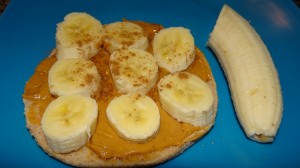 A typical pre-workout snack for me is a banana cut in half with some organic peanut butter spread over it, or a whole wheat sandwich thin or slice of Ezekiel bread with peanut butter. Sometimes I combine the two, and make a small PB Banana sandwich. If I am feeling particularly tired I also have a small cup of coffee with some coconut milk. This is also my normal pre-race meal.
A typical pre-workout snack for me is a banana cut in half with some organic peanut butter spread over it, or a whole wheat sandwich thin or slice of Ezekiel bread with peanut butter. Sometimes I combine the two, and make a small PB Banana sandwich. If I am feeling particularly tired I also have a small cup of coffee with some coconut milk. This is also my normal pre-race meal. When deciding what type of cardio to do each day I take into account any additional workout that I have done, how my body feels, and what I did the day before. For example, if my workout of the day is a high intensity interval workout (HIIT) I will most likely walk, or do steady state cardio at an easy pace on the treadmill. If the HIIT workout was particularly intense or consists of multiple rounds I count that as my cardio, and don’t add anything additional.
Walking:
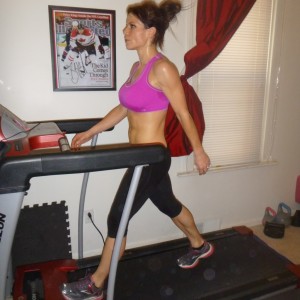 When walking on the treadmill I love to use the incline function to increase the intensity of the workout. Walking on an incline is a great way to increase your heart rate and cardiovascular function. You can also double the amount of calories you burn, as compared to walking on a flat surface.
When walking on the treadmill I love to use the incline function to increase the intensity of the workout. Walking on an incline is a great way to increase your heart rate and cardiovascular function. You can also double the amount of calories you burn, as compared to walking on a flat surface. I generally start with 1-2 minutes with no incline for all walking to warm up, and I keep the pace around 4.0-4.2.
Walk 1 (Total Time 35-45 Minutes):
-Minutes 1-2: No Incline.
-Minutes 2-10: Select a challenging incline that makes you sweat, increases your heart rate, and breathing.
-Minutes 10-12: No Incline.
-Minutes 12-20: Increase the incline challenge by 1-2%.
-Minutes 20-22: No Incline or very low incline (1.5-2.5%).
-Minutes 22-30: Moderate Incline.
Cool Down: 5 minutes at no incline, decreasing to a comfortable pace.
Walk 2: Incline Intervals (Total Time 30-45 Minutes):
-Minutes 1-2: Warm Up, no incline comfortable pace.
-Minutes 2-30: Alternate incline every two minutes, varying between very challenging, and easy paces.
-Cool Down: 5 minutes walking at a comfortable pace, allowing your heart rate to return to normal.
Walk 3: Incline Challenge (Total Time 20-35 Minutes):
-Minutes 1-2: Warm Up, no incline, comfortable pace.
-Minutes 2-15 (or 30): Maximum incline that you can maintain for an extended period of time.
-Minutes 15-20 (or 30-35 for longer workouts): Cool Down, no incline, comfortable pace.
Running:
For the purposes of this post I will stick to describing indoor running on the treadmill. In the warmer months I do 99% of my running outdoors.
Run 1: Steady State Cardio (30 Minutes):
-Warm Up.
-Minutes 1-30: Run at a comfortably challenging pace. You should be sweating, but should be able to carry on a conversation.
-Cool Down: 5 Minutes
Run 2: 3 Mile Pace Climber (Time varies depending on your mile pace):
-Warm Up.
-Mile 1: Comfortably Challenging/Conversation Pace.
-Mile 2: Increase the speed to a pace where you can still talk, but it is challenging.
-Mile 3: Race Pace speed.
-Cool Down: 5 minutes
Run 3: Treadmill 5K (Time varies depending on mile pace):
-Warm Up
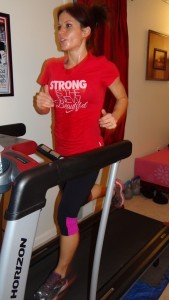 -Select a pace that is reflective of your 5K (3.1 mile) race pace, or slightly faster. If you are training to increase your 5K speed you can decide based on your goal pace and progress from there. Complete 3.1 Miles at this pace.
-Select a pace that is reflective of your 5K (3.1 mile) race pace, or slightly faster. If you are training to increase your 5K speed you can decide based on your goal pace and progress from there. Complete 3.1 Miles at this pace. -Cool Down: 5 minutes.
-Run 4: 3 Mile Interval (Time Varies):
-Warm Up.
-Mile 1: Comfortable Pace.
-Mile 2: Race Pace.
-Mile 3: Comfortable Pace
-Cool Down: 5 Minutes.
Run 5: 30 Minute Interval Variation (30 Minutes):
-Warm Up.
-Vary Interval every 1-2 minutes, alternating between easy, and challenging paces.
-Cool Down.
Run 5: Long Run:
*I typically do my long runs outside, even in the cold months, but they can be done on a treadmill.
-Run at a comfortable pace for desired distance or length of time. This can vary from 45-60 minutes for me on the treadmill. Outside I focus on miles and will do 8-13 miles.
Need Motivation:
-Sign Up for a 5K, 10K, or a Half Marathon in your area! Every time you run or walk you will know that you are training for something. It can be a great motivator to train and stay consistent with your cardio!
If you liked this post you may also like:

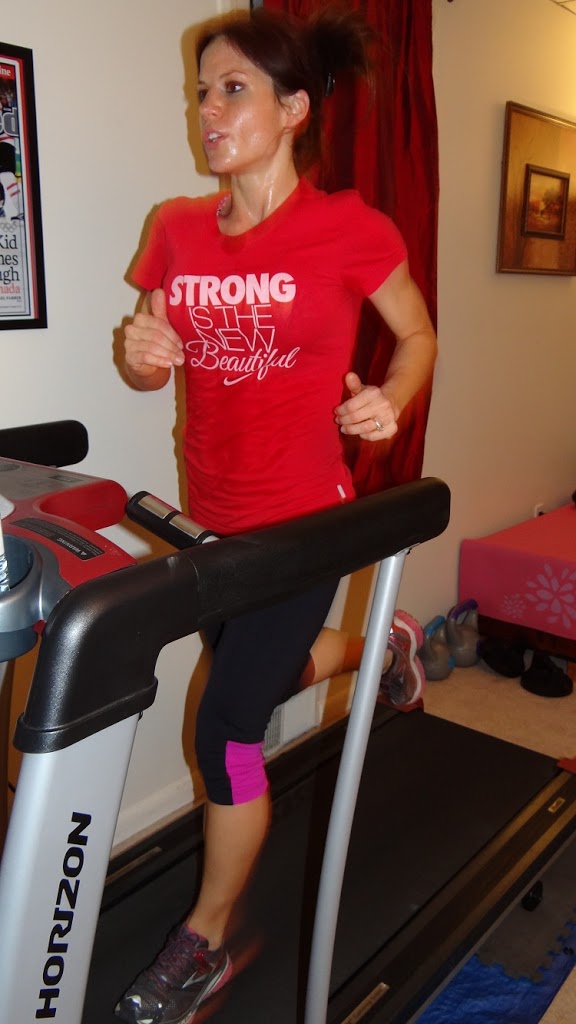
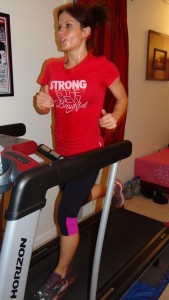


Have either of you ever tried the barefoot burning craze?
I haven’t tried it. Jesse has tried minimalist running shoes and wasn’t a fan. For a lot of runners barefoot and minimalist shoes put to much strain on the Achilles tendon (which is shortened in many long term runners). If you try it be sure to transition slowly, incorporating it into your runs so your body has time to adjust and strengthen properly to the new form.
Where did you get your red shirt “Strong is the new beautiful”? I love it!
Hi Melissa,
Thanks for this post! I wanted to ask your opinion on cardio and hiit. I workout regularly and typically incorporate hiit’s into my fitness routines throughout the week. Based on my experience and understanding, it seems that hiit’s are really the most effective way to burn fat and keep your metabolism boosted while simultaneously incorporating cardio. What, in your opinion, are the added benefits of doing 30 minutes of steady cardio, say on a treadmill? It just seems like it would be more effective to do a hiit than do a steady cardio for a longer period of time. I know variety in your fitness is a good thing, but I’d rather do different hiit’s than a steady cardio. What are your thoughts on this? Thank you!
Hi Tanja, for fat burning HIIT is the most effective. If you are happy with HIIT by all means stick to it! It works, and it’s challenging so you won’t be missing out on any fitness gains!
Steady state cardio is still beneficial at improving endurance, and can correlate to a higher calorie burn (depending on the length of the workout). Also, depending on the speed/effort of your steady state cardio it can be a great recovery workout if you are stiff/sore from a HIIT routine. Running at a slower pace can get your blood flowing and remove some of the lactic acid build-up in your muscles.
🙂
Melissa